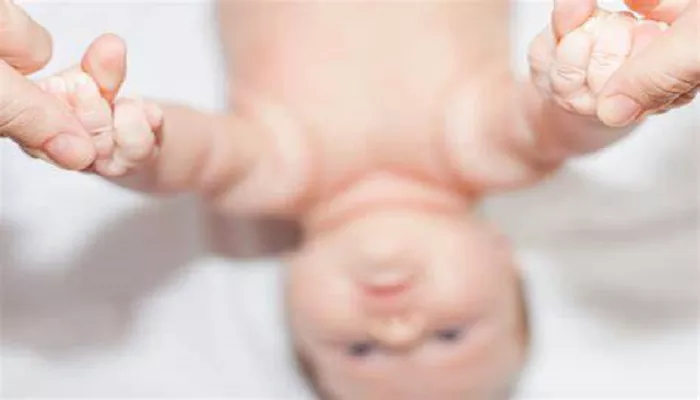When a newborn clasps your fingers, opens its mouth in search of food, kicks its legs, waves its arms, or moves around, these seemingly simple “little movements” are actually the “life code” of human development – infants’ primitive reflexes.
What exactly are primitive reflexes? What kind of significance do they hold? And why should new parents pay attention to them? To answer these questions, the reporter interviewed Zhang Biyun, an associate chief physician in the Pediatrics
Department of the First Affiliated Hospital of Guangzhou Medical University.
Primitive reflexes are responses that occur in specific neural pathways of a newborn when exposed to certain stimuli. They are innate, involuntary motor responses controlled by lower neural centers like the brainstem and spinal cord, and don’t require learning. Zhang Biyun explained that these reflexes play a crucial role in the early survival and development of infants, gradually fading away as the nervous system matures. Typically, within 3 to 6 months after a baby’s birth, these primitive reflexes disappear and are replaced by autonomous movements from more advanced brain regions. There are about ten types of primitive reflexes, including the foraging reflex, sucking reflex, hugging reflex, grasping reflex, bending and lateral bending reflex, stepping reflex, and tension neck reflex, among others. Each reflex serves as an important indicator of an infant’s nervous system development.
For example, when a finger touches a newborn’s cheek or lip, the baby will turn towards that side, similar to foraging behavior, which is the foraging reflex. When the nipple touches a newborn’s lower lip, it triggers the sucking reflex. This reflex is innate at birth and is a survival instinct of newborns, gradually weakening and disappearing when the baby starts to eat independently between 4 and 6 months old.
Another example is the grasping reflex. When a finger or a pencil touches a newborn’s palm, the baby will grip it tightly. Stimulating the sole of the baby’s foot also elicits a similar response. Newborns’ grasping reflex is quite strong, and some can even hold an examiner’s hand tightly enough to support their own body weight. The grasping reflex is gradually replaced by active grasping actions three months after birth. It’s important to note that newborns or infants with severe brain injuries or abnormally high muscle tone may have overly strong grasping reflexes.
Primitive reflexes uniquely contribute to the construction of a baby’s motor, cognitive, and social-emotional development systems. By observing and making use of these reflexes, parents can gain insights into their children’s neural development and promote their growth through daily interactions. Zhang Biyun provided the following suggestions for parents
Comprehensive Health Screening, Parents should actively inquire about the results of the primitive reflex test during their child’s health check-up. They can also learn simple home observation methods, such as gently touching the baby’s palm to observe the grasping reflex. If any abnormalities are detected, they should avoid self-diagnosis and consult the pediatric neurology department promptly.
Development Timeline Establishment, Keep track of the appearance and disappearance times of key reflexes and compare the symmetry on both sides. For example, gently touch the baby’s left and right palms to check if the grasping force is consistent. Unilateral weak reflexes may suggest conditions like brachial plexus nerve damage or clavicle fractures. Also, pay attention to changes in the intensity of reflexes, like the sucking reflex. If the sucking force suddenly changes from strong to weak, the possibility of the baby having an infection should be ruled out.
Neural Pathway Activation, Stimulate neural pathways through touch and massage. For instance, foot massage and gently scratching the soles of the baby’s feet can promote the development of lower limb sensation and perception. Palm massage, where the baby’s palm is pressed with the thumb, can relieve muscle tension caused by an overly strong grasping reflex.
Related topics


